When surveyors commission building assessments, the services engineers rarely get to meet the client and find out the business context. Stefan Desormeaux and David Hitchcock from CB Richard Ellis Building Consultancy took a gamble in trying to change that. They talk to David Arminas about how they are uniting the two disciplines
Stefan Desormeaux
...made the move to CB Richard Ellis Building Consultancy for two reasons. First, there was a place to park his bicycle. Second, he had seen sound business reasons for having services engineers working side-by-side with surveyors. To prove his point, he had to be part of a large multidisciplinary team.
David Hitchcock
...decided having building services engineers alongside the property consultancy’s surveyors could add value for CB Richard Ellis clients. But he didn’t want to buy and rebrand a building services firm, keeping it at arm’s length from quantity and surveying teams. He wanted engineers embedded in the teams. His bold innovation was to make engineers client-facing.
Q. David, why did CBRE decide to embed building services engineers?
David: We analysed how much work we gave to outside engineering firms and said, “That’s interesting!” We thought we could at least do a proportion of it with an internal team and pick up easily £2m-£3m of fees with existing clients, starting with properties we managed.
Q. How did the two of you get together?
Stefan: I worked in Australia for seven years and was CIBSE chairman there. We used the RICS offices for meetings because our numbers were so low. I got to know some surveyors and thought we had common ground for working together, so when I returned to England in 2006 I looked for a job where I could be with surveyors. I had five job offers, but only two, including one with CBRE, were with surveyors. I chose CBRE because they had bicycle parking facilities. It’s partly a joke, but also indicative of the quality of what CBRE provides.
David: I saw potential in having an internal services engineering team and when we recruited Stefan it was able to grow from there. I sat down with him and set out a business plan. I sit on the main board, which helps to get things through.
Q. What was your perception of each other’s profession previously?
Stefan: I didn’t understand exactly what surveyors did. Perhaps they were middlemen between engineers and clients. They were guys in suits who gave instructions, never asked questions, just got the reports. Now I realise they have significant understanding of a client’s financial drivers. We’ll visit a site together, write reports together, visit clients together.
David: Clients think building services engineers are only technical people and don’t really want to deal with them. The belief is that engineers are generally not very good at articulating what the issues are. Of course, there are exceptions, but building and quantity surveyors view them as quite techy and not able to see a client’s objectives. In general, engineers have a lot to learn about interfacing with clients and understanding their needs, and that is what we offer.
Q. David, how did bringing in services engineers sit with the other professions already there?
In general, engineers have a lot to learn about interfacing with clients and understanding their needs.
David Hitchcock
David: I have to admit, there were a few long faces. The directors were saying it would be a low-margin proposition and it would dilute our profit. But I have never accepted that and building services are on a par when it comes to delivering a return on profit, which I think is industry leading. We expect a return of 25% across all areas and engineering is within this. Clients are willing to pay a little more if they can see building services adds value.
Q. How has the way you work changed?
Stefan: In my previous role I probably met two clients in two years. I never fully understood the client’s business and simply did a condition survey of their property, telling them, say, that the boilers would likely be broken in five years. Now we work alongside surveyors and the client to understand their issues, including leases and financial drivers. We know why the condition survey is being done, the terms of the lease, how much the client has to spend and why they are spending it. I’m meeting clients two or three times a week. As we develop our services, for example in energy consultancy, we move away from internal clients and have our own external client base.
David: Most of the engineers we’ve plucked from other firms have never been near a client. Now, without exception, every one of our engineers is client-facing with our other professions. Knowledge rubs off on everybody.
Q. What do clients say when they learn you come as part of the surveying team?
Stefan: I first thought that clients might see a conflict of interest or collusion – surveyors turning up with engineers who work for the same organisation and saying that such and such needs replacing or repair. They didn’t. In fact, clients are receptive to our teamwork.
David: The whole image of brand has changed in the past five years. When I started at Richard Ellis I was in project management. We had a hell of a job persuading clients that we could do project management because they believed our firm was really an estate agent. The move has been towards a broad consulting practice.
Q. What is the set-up within CBRE?
Stefan: I have three sections. One is technical asset management for about 200 properties, including some ING and St Martins portfolios. Another section is technical design for new-build, refit or development monitoring, aimed more on the high-level side, such as data centres where the engineering aspect has far greater importance than the architectural and structural. We recently completed the BlackBerry European HQ data centre in Slough. The last section is energy management.
David: We still work with other consultants, including Arup, WSP and Buro Happold, because we have a lot of big projects. We won’t be massive but we will grow. Some clients do want a one-stop shop. Having our own set-up means you can simply lean over and talk to the building services engineer in your own office.
Q. Can you give an example of a project you have worked on?
Stefan: For two years we’ve worked on the 130m-high IZD Tower in Vienna, built in 2001. One of CBRE’s clients wanted to buy the building. Our engineers worked with people from cladding, surveying and structural to advise the client and do due diligence. We found shortfalls in the air-conditioning capacity which meant the client took a hefty chip off the price. We’re now upgrading the AC units, installing thermal storage units, adding chillers, increasing the size of pipework and upgrading electrical capacity. The client will probably use us for maintenance, too. The important part for us is that we worked with surveyors to produce reports and we sat next to the client, going through the reports with them. Historically, we as engineers would not have been involved in client interaction. The surveyors would have met the client alone and simply explained that there were problems with pipes and chillers.
David: The old way would have been for CBRE to ask a Vienna engineer to do the due diligence for our client, and that would be it. Other work would have gone to local firms. But our new way of working is a good example of finding ways of keeping in touch with a client, such as ongoing management and maintenance.
I thought that clients might see a conflict of interest or collusion. In fact, they are receptive to our teamwork.
Stefan Desormeaux
Q. What is the target for your building services division?
Stefan: We have 20 engineers but hope to have 27 or more by the end of the year. We could expand faster but it’s important to get the right people. I’m always wary of taking on people just because the work is out there.
Q. Can you be selective about whom you hire in a market where there are more jobs than engineers?
Stefan: Remuneration drives most people and we offer a good personal package. Our offices are prestigious, in central London. Projects, too, are prestigious. But CBRE also ploughs a percentage of a division’s profits back into a bonus for its employees.
David: If the department has a good year, that proportion is ring-fenced and is not creamed off by the equity partners. It’s a performance-related culture but not dog-eat-dog.
Q. Apart from profit, are there other yardsticks to measure the success of embedding building services engineers?
Stefan: We’ve had a 100% retention rate in the past two years. With the market the way that is, I’m very proud.
David: The building consultancy division has the lowest attrition rate in the firm.
Q. Will your set-up become common for building consultancies?
David: Some of the big firms, such as WSP, probably aspire to where we are. They’ve already got into facilities management and other areas. I can’t see us buying a building services firm. We want to continue with high-end consultancy. When CBRE buys a business it has to be fully integrated into the rest of our business. We will grow organically.
Q. Any advice for building services engineers who’d like to work for you?
David: We need engineers with business acumen, good at articulating complicated issues and going away and getting things sorted out within their own team.
Stefan: I don’t think any of my engineers had been client-facing before joining us. At the interview stage you can tell if they have the potential to be. We then mould them into that person. I need that potential.
Stefan Desormeaux, director, CB Richard Ellis Building Consultancy
- Twenty years’ M&E experience with firms including Blyth+Blyth and, in Australia, Lincolne Scott and Napier & Blakeley
- Conducted framework agreement negotiation and set-up for ING’s commercial property portfolio, completed due diligence for Sydney Opera House and AMP’s commercial office portfolio
- Joined CBRE in 2005 and advises on energy conservation, water reuse and diligent management of buildings for clients including Crown Estate and Matrix Group
David Hitchcock, head of CB Richard Ellis Building Consultancy across Europe, Middle East, Africa
- Chartered surveyor, joined Richard Ellis 20 years ago
- Provides surveying, project management, quantity surveying and architectural design services
- Projects include Paddington Station, the Lanesborough hotel on Hyde Park Corner, HQ for Lloyd’s Register of Shipping
- Initiated the firm’s energy and sustainability group
Source
Building Sustainable Design
Postscript
Original print headline: "The odd couple" (Building Services Journal, June 2008)




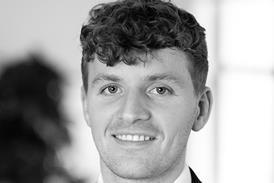
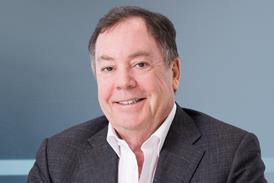
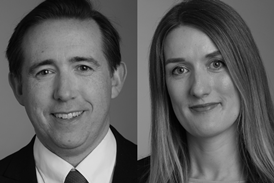



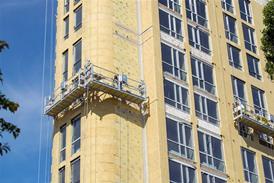







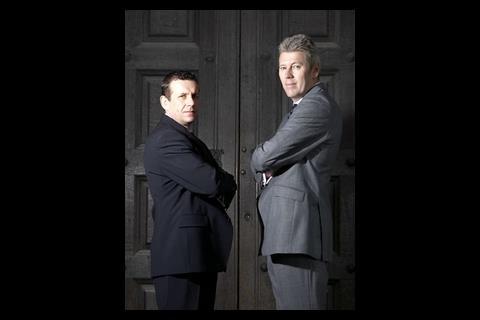
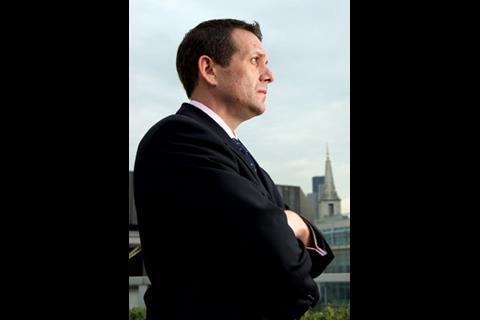
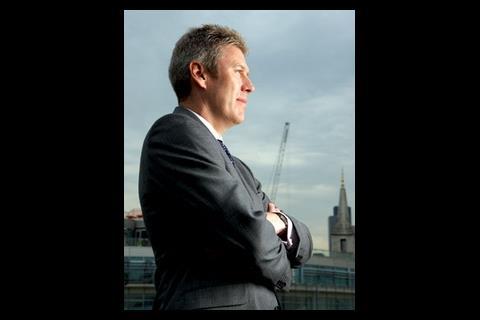

No comments yet